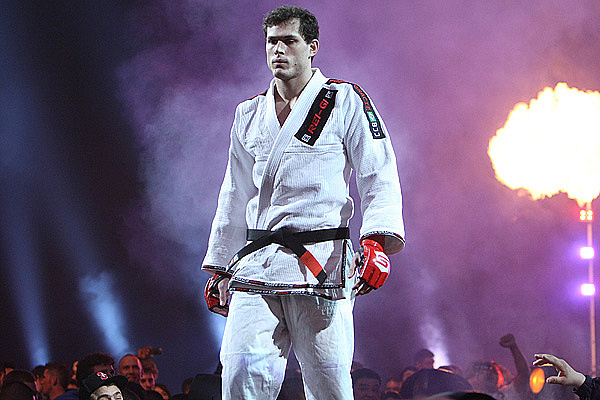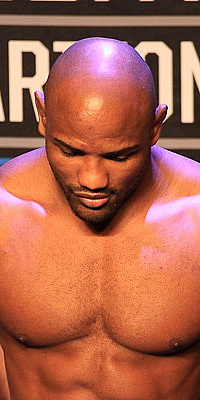One Man’s View: Fast-Track Pitfalls

Roger Gracie learned a hard lesson against Muhammed “King Mo”
Lawal. | File Photo: Sherdog.com
Matchmaking in mixed martial arts is an often-overlooked science, but it plays a key role in developing a fighter. How a fighter’s management negotiates the bouts offered to him by a promotion is indicative of the intended path toward higher things. Nobody takes a fight they think they will lose.
With the influx of high-level athletes, especially elite grapplers, into MMA, the fast-track approach has considerable appeal. It comes into play when one skips the requisite long-term building processes of getting, say, 10-15 fights before competing in a major promotion like the UFC or Strikeforce; the fighter’s pedigree in college wrestling or competitive grappling is assumed to be good enough to carry him along, with the hope that the rest of his game will materialize. The downside of that expedited climb is that when questions do present themselves, they are often tough ones the prospect has not had the time and experience needed to become qualified to answer them.
Advertisement
In the first round of his bout with Rafael Cavalcante, Palacio moved, juked, circled and did a pretty good imitation of a professional fighter, but he did not throw a single significant strike. Such histrionics often demonstrate the difference between a nervous neophyte to the striking phase of the overall MMA game and seasoned pros like Cavalcante, who do not needlessly exert themselves.
Moments after eliciting a rightful warning from referee Dan
Miragliotta to pick up the action and quit stalling late in the
first round, Palacio shot for a takedown he could not finish. It
was a confirmation of what Palacio’s worst fears probably were --
and the beginning of the end for the 2000 Olympic silver
medalist.

Yoel
Romero Palacio File Photo
Palacio also faced steep competition.
While Romero was unraveling tactically, Cavalcante was only getting stronger in the same kind of fight he made in his masterful knockout win over Lawal. The psychological effect of demonstrating resilience, particularly against an opponent with limited experience, in a long, tough fight can be highly effective in wearing him down.
A first loss in MMA is inevitable and a learning experience in itself. Ironically, Lawal himself was subject to the limits of his experience in his first defeat against Cavalcante and has emerged a better fighter for it. Still, when one is on the fast track and competing on the big stage, expectations are accordingly higher. Setbacks resonate that much more.
Age can also play a role in deciding how quickly to move a fighter. Gracie turns 30 this month, while Romero is 34. In both cases, their performances served as sobering reminders of how small chinks in still-developing prospect’s armor can be exploited.
On a longer developmental track, a prospect is exposed to fresh variables and problems in an environment where the exam is challenging enough to prompt growth while not completely overwhelming him. Ideally, the problem is confronted, solved and the fighter moves ahead to his next bout, with the lessons and wisdom accrued from solving strategic and tactical riddles. This accumulation of knowledge is paralleled with the development of his all-around skillset, which preferably will carry him through the next level of competition.
Such luxuries and targeted opportunities for professional development are something no 25-8 fighter has ever known and is precisely why a canny vet like Pat Healy, who dismantled Maximo Blanco on the undercard, represents that exact kind of test.
As MMA continues to explode and grow its ever-expanding talent pool, the numbers trend younger and younger. Today’s UFC rookies have startlingly better pedigrees than their relative equivalents five or so years ago. To be an NCAA All-American is increasingly the norm rather than a stellar exception, and MMA’s increasing timeline of exposure to prospective fighters means that more and more of them focus on the sport at a younger age. Rory MacDonald, who began training in MMA at 14, had no equivalent 10 years ago, unless one counts the primitive stylings of Brazil’s vale tudo competitors, very few of whom had the technical level of today’s fighters.
Imagine how ruthlessly competitive the sport will be in five years, when a huge cadre of the game’s best college wrestlers have been eying a career in MMA and working on their striking and jiu-jitsu expressly to facilitate their eventual professional move once their amateur wrestling days are over. Perhaps that is an even better argument for advanced-age fighters to try the fast track, but it certainly is not going to get any easier to negotiate it in the coming months and years.
Jason Probst can be reached at [email protected] or twitter.com/jasonprobst.
Related Articles






